| Who needs AccuMax™ Array ? |
| Those hoping to : |
- Discover various molecular events or molecules ,
- Find candidates for novel molecular targets such as
a cancer gene ,
- Validate candidates for novel molecular targets using
human tissues with appropriate information .
|
| Why AccuMax™ Arrays are the best slides for the
Tissue Array ? |
| Thorough quality control : |
- Almost no loss of tissue spots
- Maximum preservation of tissue antigenicity
- Allows for detailed pathological and clinical information
- Variety of organs that can fit on a single slide |
| Which are the caratheristics of AccuMax™ Arrays
? |
- Formalin-/Paraformaldehyde-fixed or frozen tissues
- Ideal diameter for tissue section spot (1.0 mm)
- Easy-to-read format
- Individually packed to maintain maximum antigenicity
and prevent oxidation
- Relevant information and certificates |
| Quality Assurance & Quality Control |
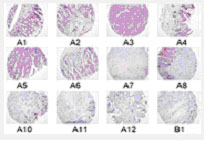 |
| To guarantee the correctness of each tissue spot on
the AccuMax Tissue Microarray: |
1. Every 20 slides and the last slides from a
block are H&E stained and read by a certificated pathologist
2. Randomly selected H&E stained are re- read
by another pathologist
3. All Tissue Microarrays are iindividually examined
by well trained technologists before packing to guarantee
no loss of tissue spots
4.Packages are double checked to find any defects |
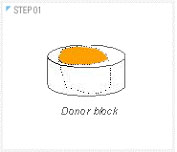 |
Step 1 : Preparation
of a donor block
1. Conducted by certificated pathologists
and technologists
2. Through standardized and strict protocol
supervised by certificated pathologists
3. Use of top-quality materials |
|
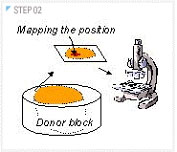 |
Step 2: Selection of
the to-be punched position in the donor block
Conducted and double checked by certificated pathologists |
|
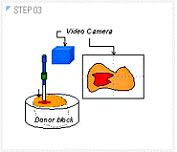 |
Step 3: Punching the
tissue target zone
1. Guided magnified image in real time
2. Carried out to minimize errors from manual
operation
3. Specially designed needle to guarantee
the smoothness of margin of punched core. |
|
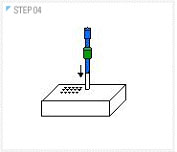 |
Step 4: Making a hole
into which the punched core is going to be transferred
1. Specially designed needle to guarantee
the fitness of core to the hole
2. Carried out to minimize errors from manual
operation
3. Use fully qualified materials having hardness
and minimum crack during process. |
|
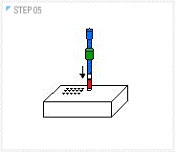 |
Step 5: Transfer of
the core into the hole transfer of the core into
the hole
Carried out to minimize errors stemming from manual
operation - automatic control of the positionn |
|
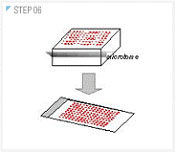 |
Step 6: Manufacturing
the Tissue MicroArray
1. Conducted by certificated and skillful
technologists
2. VRegular check-up with instruments and
use of top-quality materials |
|
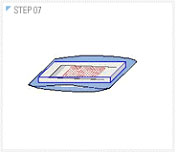 |
Step 7: Packing the
Tissue MicroArray
1. Double-packed individually with two different
packing materials under nitrogen atmosphere to prevent
oxidation and drying
2. Specially designed packing materials:
a hard plastic box and an opaque bag |
|
Step 8: Tracking
All labels are pre-attached to the materials before
use and all task carried by two different persons
simultaneously |
|